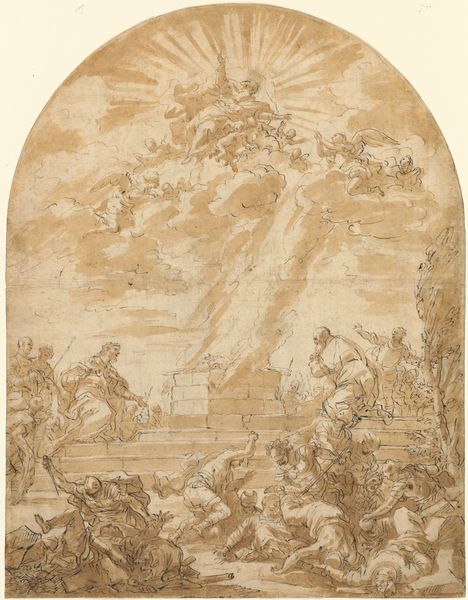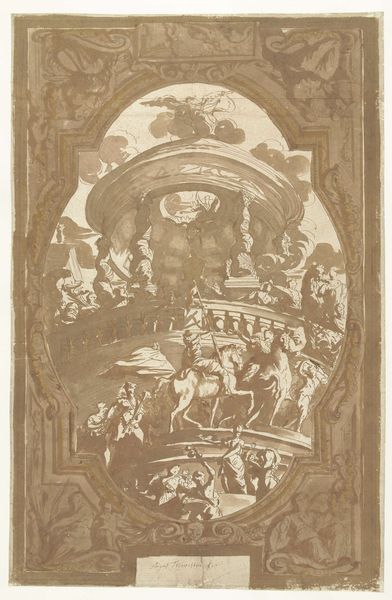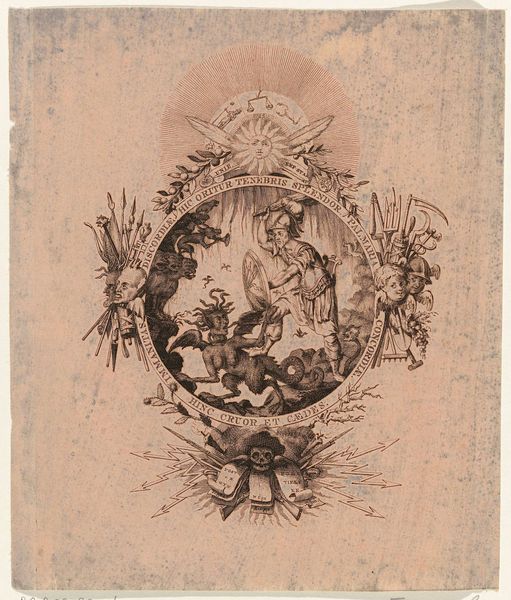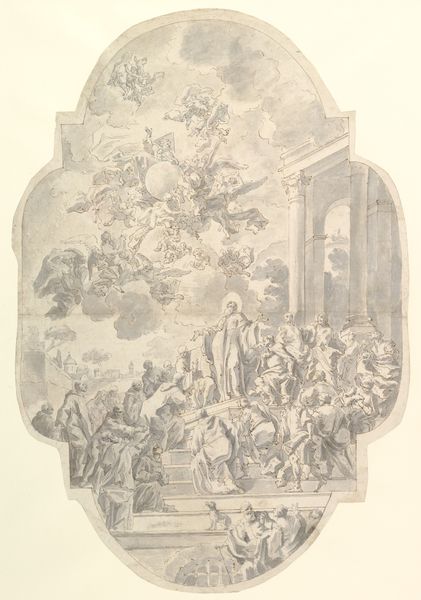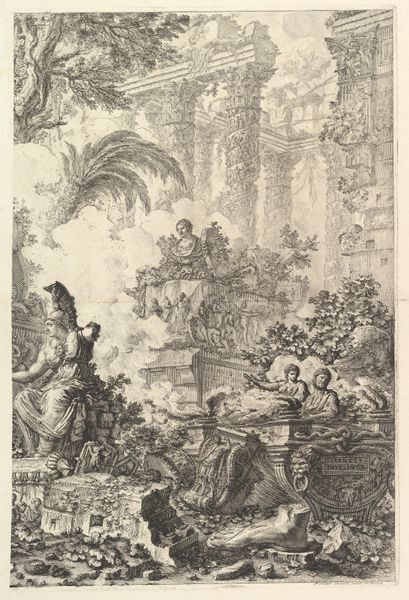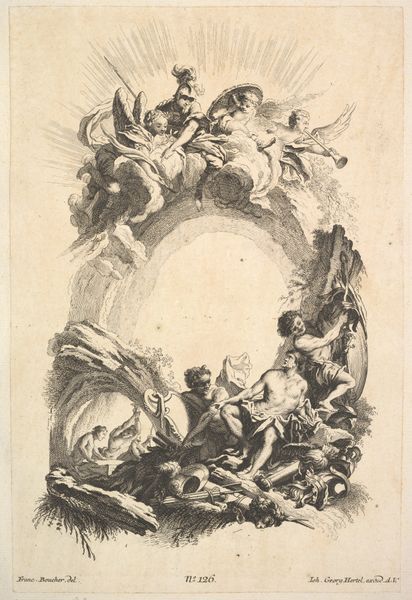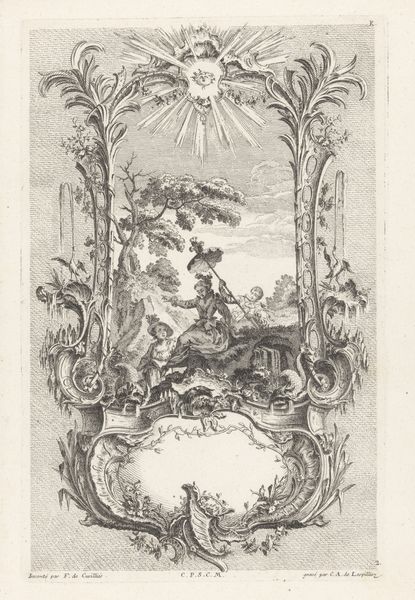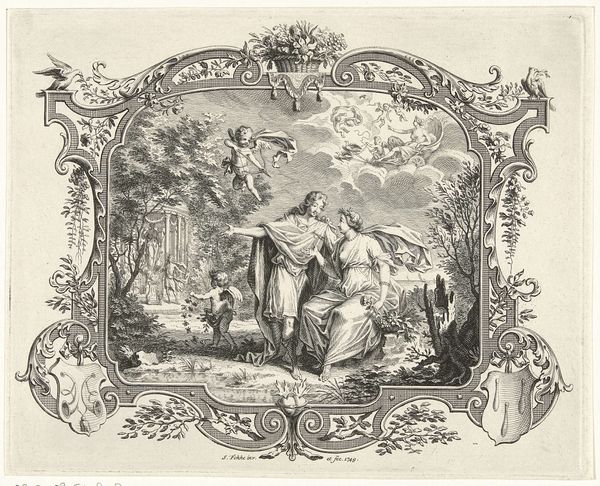
Dimensions: Sheet: 16 3/4 × 13 11/16 in. (42.5 × 34.8 cm) Plate: 15 3/8 × 11 3/16 in. (39 × 28.4 cm)
Copyright: Public Domain
Curator: Let’s turn our attention to "The Pleasures of the Countryside," an etching and drawing by Louis Marin Bonnet, created sometime between 1750 and 1793. Editor: It exudes a sense of relaxed elegance. The reddish-brown hues lend it a warm, inviting quality, but there is something contrived and performative about it too, isn't there? Curator: Precisely. Notice how Bonnet employs intricate lines to define form and texture. The composition, neatly contained within an oval, directs our gaze towards the central figures and their interactions. The careful gradation of tone from the figures in the foreground to the architecture at the back creates an impeccable structure. Editor: While undeniably skilled, I'm immediately drawn to question the title. The "pleasures" depicted are clearly those of a leisured class, enjoying a rural idyll far removed from the realities of peasant life during the ancien régime. It seems to mask larger questions. Curator: An important distinction. Bonnet’s delicate strokes produce a visual hierarchy that implicitly values artifice over genuine representations of pastoral existence. Consider, also, the placement of the musical instrument: does it function primarily as a tool to enhance their shared harmony or to denote some performative idea about upper-class entertainment? Editor: And isn't it also curious that Bonnet, with this supposed vision of harmonious “countryside,” carefully situates a caged bird right behind the amorous couple. The themes of luxury and pleasure here are predicated on captivity and class divides. This kind of subject-object dichotomy reveals a lot. Curator: True, there's a dialogue established by the careful arrangement of each formal detail. Ultimately, such choices highlight the complexities involved in accurately understanding visual pleasure as the final output of cultural meaning-making. Editor: Absolutely. The beauty of engaging with works such as this lies in their capacity to invite critical reflection and re-examination through the lenses of art, theory, and historical inquiry.
Comments
No comments
Be the first to comment and join the conversation on the ultimate creative platform.

